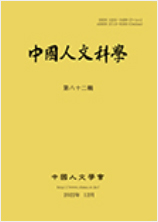중국 동북지역의 여성 작가인 츠쯔젠(迟子建)의 장편소설《백설까마귀》는 2010년 발표되어 지역적 언어 표현과 흥미로운 콘텐츠로 많은 사랑을 받았다. 당시 페스트의 역사적 배경을 중심으로 1910년 하얼빈의 발전과 성장을 생동감 있고 사실적으로 그렸다. 페스트 전후의 푸자덴(傅家甸) 사람들과 각국 교민들의 생활을 사실적으로 재현하여 독특한 시선으로 페스트 앞에 놓인 인간성을 통찰하고 폭로했다. 최근 2년간 코로나19 여파로 《백설까마귀》가 재조명받고 있다. 본 고은 양종대(梁宗岱) 선생이 문학 감상과 문학 비평에 대하여 제시한 “내외선(内外线)”의 원칙에 따라, 새로운 문학지리학의 학문적 이론과 문학 작품을 결합하여 지리 문화 속성으로부터 문학 창작을 연구하고, 자연지리환경이 소설에 미치는 영향을 분석하여 현실적이고 환상적인 도시 공간, 다문화적 이색 공간, 은유로 가득한 색채 공간, 세 방면으로 《백설까마귀》에서 구축된 하얼빈의 다중 공간을 두루 살피고 하얼빈의 도시 발전 진화사를 종합적으로 고찰하여《백설까마귀》의 창작 가치와 그 문적 의의를 발굴함으로써 기존의 동북지역 문학연구에서 미비점을 보완하고자 한다.
The novel “Snow Crow”, written by female writer Chi Zijian from northeastern China, was published in 2010. It is loved by readers because of its regional writing language and content. The story was based on the geographic space of Harbin in 1910, and the historical context throughout that era was the Great Plague outbreak. By carefully drawing a map of the modern city of Harbin, and depicting the lives of the Fu Jiadian people as well as foreign residents before and after the plague, it shows the writer's unique perspective on the society confronting an unprecedented pandemic. In recent years, because of the impacts of COVID-19, Chi's “Snow Crow” has once again caught the public‘s attention. This paper, in accordance with the principle of “Inside and Outside”, which was proposed by Liang Zongdai for literary appreciation and literary criticism, draws on the disciplinary theory of literary geography. Furthermore, combined with the specific literature, it discusses how the effects of geographical attribute to cultural creation, and analyses the influence of geographical environment on Chi's novels. Moreover, this paper investigates multiple Spaces of Harbin 100 years ago constructed in “Snow Crow” from three aspects: the real and unreal urban space, the exotic space under multi-culture, and the color space full of metaphor. This paper makes a comprehensive investigation of the urban development and evolution history of Harbin, revealing the creation value of “Snow Crow” and its literary significance, in order to make up for a lack of studies on regional literature in the northeast to some extent.
Ⅰ. 绪论
Ⅱ. 东北地理环境及《白雪乌鸦》的创作背景
Ⅲ. 《白雪乌鸦》中哈尔滨的空间构建
Ⅳ. 結論
參考文獻
(0)
(0)
